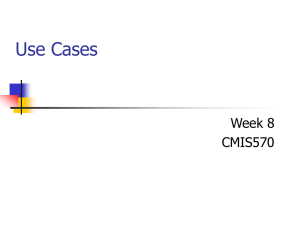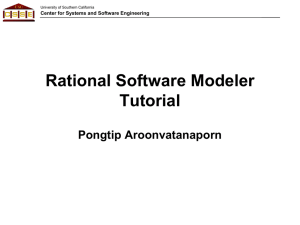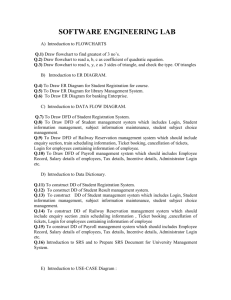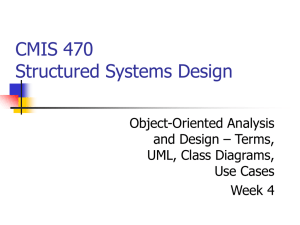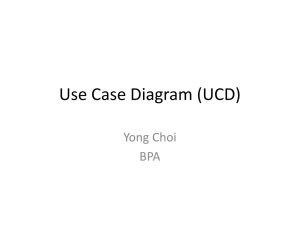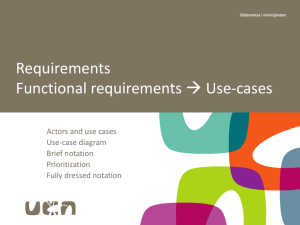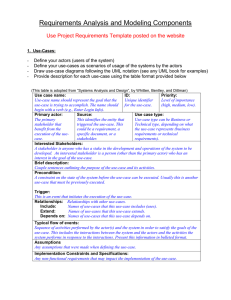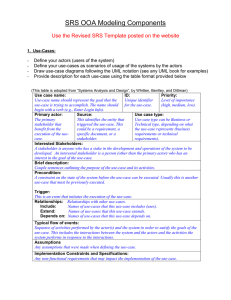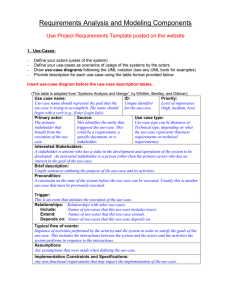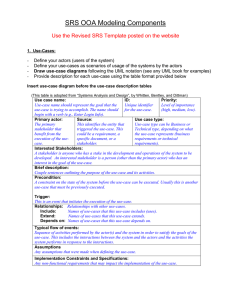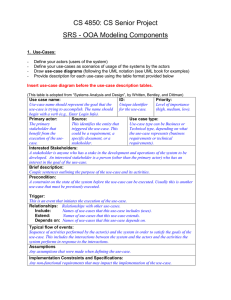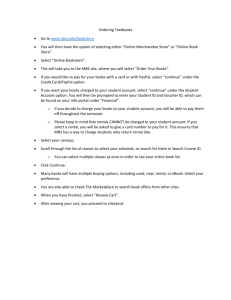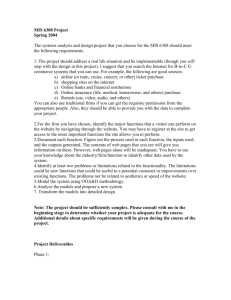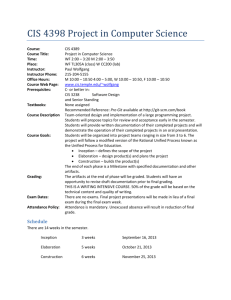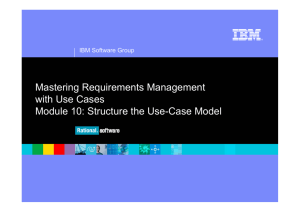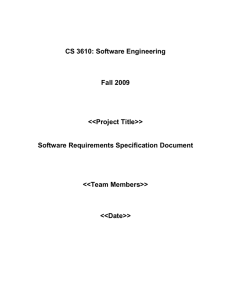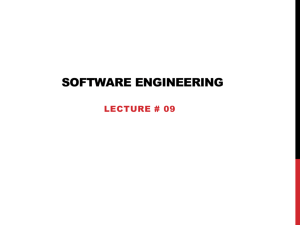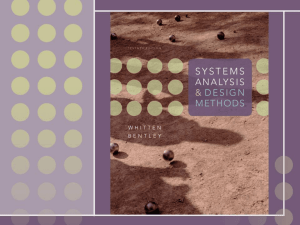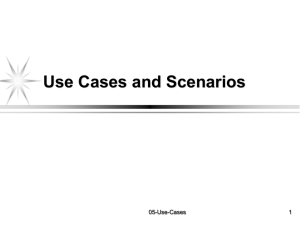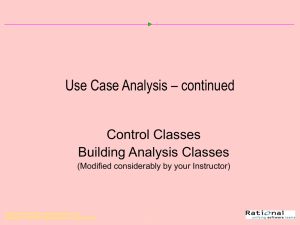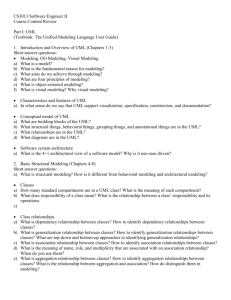Lecture #2
advertisement
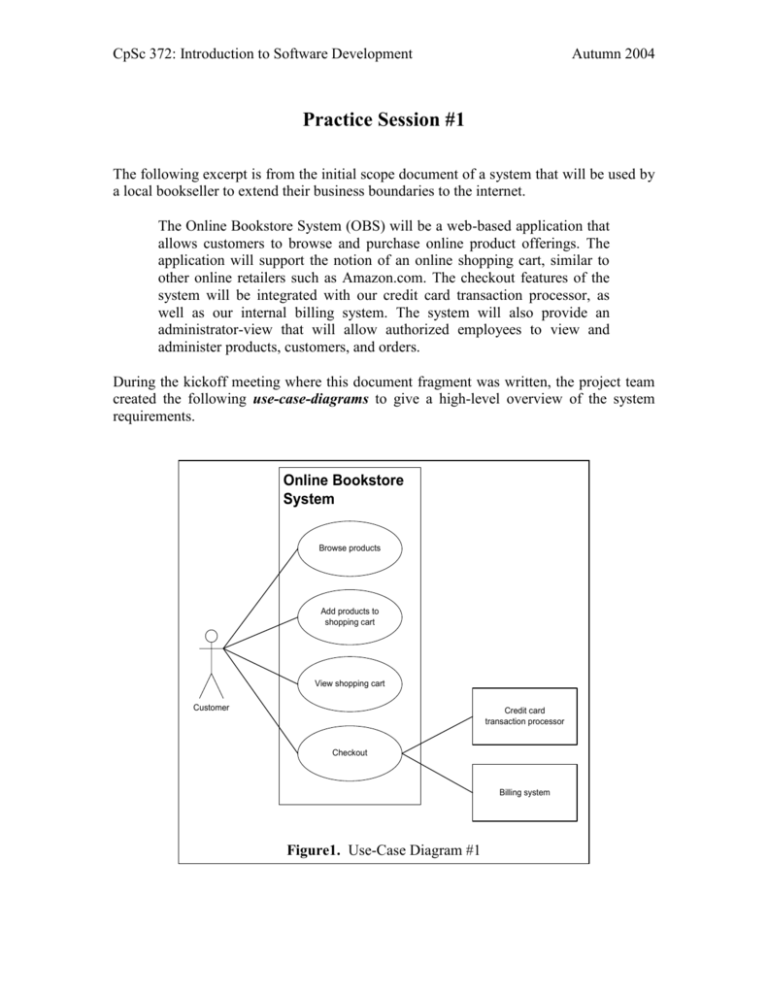
CpSc 372: Introduction to Software Development Autumn 2004 Practice Session #1 The following excerpt is from the initial scope document of a system that will be used by a local bookseller to extend their business boundaries to the internet. The Online Bookstore System (OBS) will be a web-based application that allows customers to browse and purchase online product offerings. The application will support the notion of an online shopping cart, similar to other online retailers such as Amazon.com. The checkout features of the system will be integrated with our credit card transaction processor, as well as our internal billing system. The system will also provide an administrator-view that will allow authorized employees to view and administer products, customers, and orders. During the kickoff meeting where this document fragment was written, the project team created the following use-case-diagrams to give a high-level overview of the system requirements. Online Bookstore System Browse products Add products to shopping cart View shopping cart Customer Credit card transaction processor Checkout Billing system Figure1. Use-Case Diagram #1 CpSc 372: Introduction to Software Development Autumn 2004 Online Bookstore System Administer products Administer customers Employee Administer orders Figure 2. Use-Case Diagram #2 The project team also assembled a set of documents describing each of the use-cases identified in the use-case diagrams shown above. In some instances, the use-cases were described informally. For the more complex use-case scenarios, a more formal structure was used. As an example, consider the following partial description of the Checkout use-case identified in the first diagram. Use-case: Checkout Primary actor: Customer Goal in context: To purchase the items contained in the customer’s shopping cart using the customer’s credit card. Preconditions: The user of the system is logged-in as a pre-existing customer; the user’s shipping address is therefore known. Trigger: The user decides to select the checkout option on the web site. Scenario: <TO BE COMPLETED> Exceptions: <TO BE COMPLETED> Task #1. Your task in this portion of the exercise is to complete the scenario portion of the use-case, including possible exceptions. Complete this exercise on the first transparency. (See page 190 of your book for an example.) Task #2. Your task in this portion of the exercise is to develop an activity diagram that provides a diagrammatic view of the use-case scenario that you developed in the previous CpSc 372: Introduction to Software Development Autumn 2004 task. Complete this exercise on the second transparency. (See page 192 of your book for an example.) Task #3. While working on the previous task, you should have found errors and/or omissions that must be corrected in the first use-case diagram shown in Figure 1. Your task in this exercise is to update the first use-case diagram to reflect what you learned while working on the previous task. Complete this exercise on the third transparency. Do you have to make any changes to the use-case diagram shown in Figure 2? Task #4. Your task in this portion of the exercise is to develop a level 0 data flow diagram (i.e. context diagram) for the Online Bookstore System. Remember that a data flow diagram takes an input-process-output view of the system to be constructed, and provides another view of the system to be built. A portion of the level 0 data flow diagram is given on your fourth transparency. Complete this diagram by adding the appropriate external entities, data/control objects, and data stores. (See page 196 of your book for an example.) What would the level 1 data flow diagram look like?
